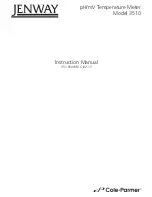
C H A P T E R 3 C O N F I G U R I N G V 1 0 0
V100 Versatile Multiplexer Technical Manual Version 2.2
Page 48 of 231
TIE-LINE ACTIVATION
For voice channels, the “TIE_LINE ACTIVATION” field specifies how Tie-line bandwidth is requested. In
“Auto” mode, a permanent connection is made which takes bandwidth all the time. When set to “M-lead”,
connections are made only when the M-lead is seized, thereby yielding bandwidth when not required.
“M-lead & Back Busy” was developed to overcome a failing in system topologies which are indirectly
connected to a remote analogue PABX. Such systems in the V100 network could take the form of a unit
connected via the HSC or an intermediate node, where the carrier status of the overall link is unknown. In
such a case the call is placed by the local PBX, which sees the local port is free and raises the M-lead. The
local unit tries to connect to the remote port but the connection fails because a link along the way is
down. To the calling PBX, the call status is unknown because there is no feedback and the user hears
nothing.
To avoid this frustrating phenomenon, the “M-lead & Back Busy” selection was designed. Here, the local
port issues pings every 30 seconds from mapped Tie-Line ports (provided the system Tie-Line Activation
mode is set to "M-Lead & Back Busy" and the Tie-Line port has an algorithm selected). The remote port
responds to this ping if it is free. The local port checks for Ping Response timeouts (45 seconds) and
asserts a BackBusy request. If the port is in the idle state the BackBusy state is immediately translated
into the E-Lead signal. So, the state of BackBusy is translated to the E-Lead signal, unless the port is
turned off in which case the E-Lead signal is affirmed (busy).
This provides the following features on mapped Tie-Line Voice channels:-
•
BackBusy will be asserted between 15 and 45 seconds after loss of communication
•
BackBusy will be disaffirmed between 0 and 30 seconds after communication is restored.
•
A manual back busy facility is activated by turning the coder algorithm off.
ASYNC BUFFER SIZE
The “ASYNC BUFFER SIZE” field allows the user to optimise the number of 100mS input buffers used by
asynchronous channels. This can be useful when channels are used for remote internet access which is
made at a negotiated rate and cannot be controlled.
HSC MODE
The High Speed Channel port is configured, either as the unique master, which polls for any units on the
bus, or as a slave which acts a channel expansion chassis. The HSC has independent RX and TX clocks
running at 4Mbps, which may be supplied either by an internal or an external source. See “Expansion –
the High Speed Channel (HSC)”.
NOTE: TDM CARD OPERATION
When the TDM Framer Card is fitted AND AT LEAST ONE DATA CHANNEL IS IN TDM MODE, the HSC port
















































